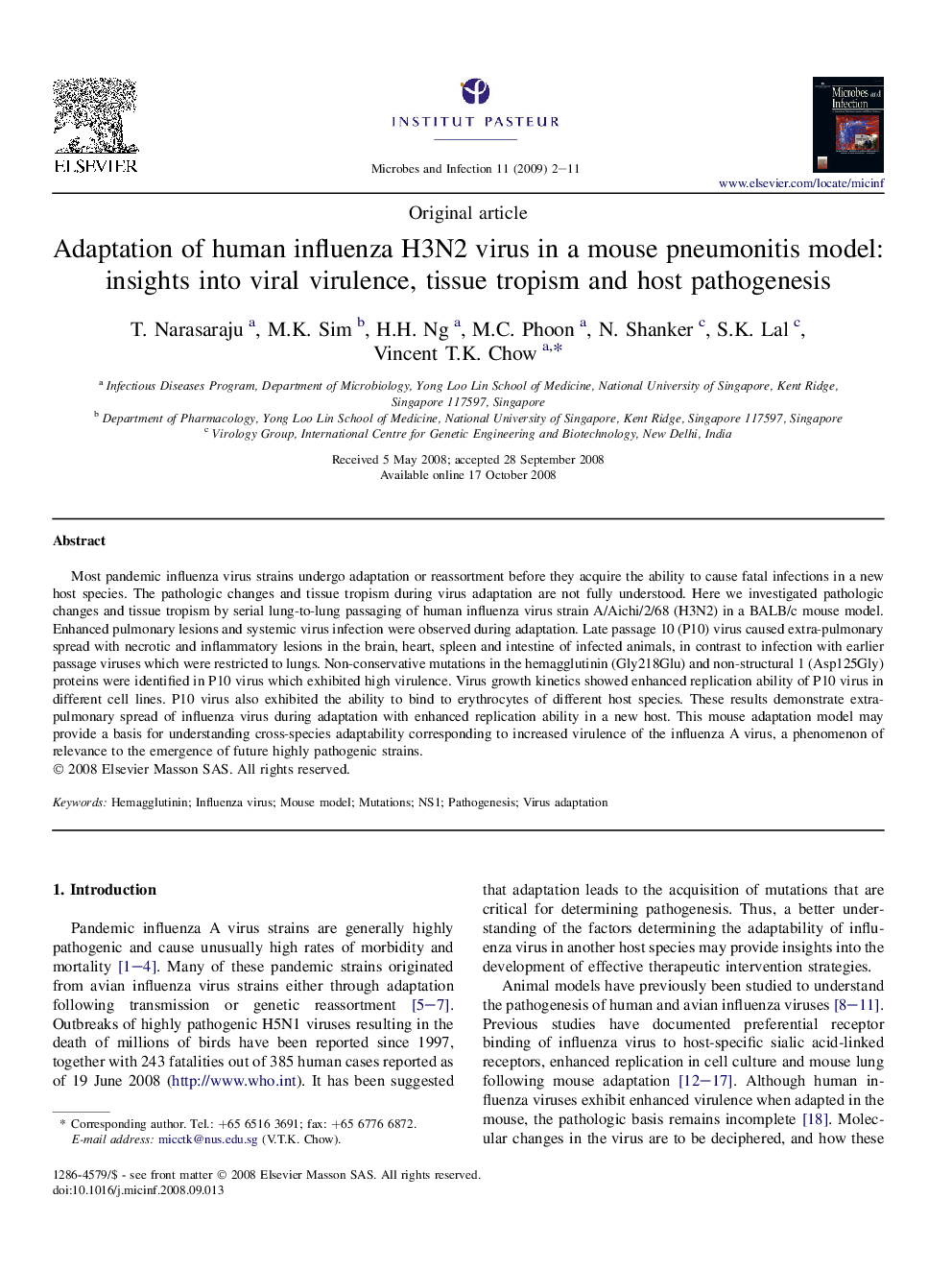| Article ID | Journal | Published Year | Pages | File Type |
|---|---|---|---|---|
| 3415470 | Microbes and Infection | 2009 | 10 Pages |
Most pandemic influenza virus strains undergo adaptation or reassortment before they acquire the ability to cause fatal infections in a new host species. The pathologic changes and tissue tropism during virus adaptation are not fully understood. Here we investigated pathologic changes and tissue tropism by serial lung-to-lung passaging of human influenza virus strain A/Aichi/2/68 (H3N2) in a BALB/c mouse model. Enhanced pulmonary lesions and systemic virus infection were observed during adaptation. Late passage 10 (P10) virus caused extra-pulmonary spread with necrotic and inflammatory lesions in the brain, heart, spleen and intestine of infected animals, in contrast to infection with earlier passage viruses which were restricted to lungs. Non-conservative mutations in the hemagglutinin (Gly218Glu) and non-structural 1 (Asp125Gly) proteins were identified in P10 virus which exhibited high virulence. Virus growth kinetics showed enhanced replication ability of P10 virus in different cell lines. P10 virus also exhibited the ability to bind to erythrocytes of different host species. These results demonstrate extra-pulmonary spread of influenza virus during adaptation with enhanced replication ability in a new host. This mouse adaptation model may provide a basis for understanding cross-species adaptability corresponding to increased virulence of the influenza A virus, a phenomenon of relevance to the emergence of future highly pathogenic strains.
